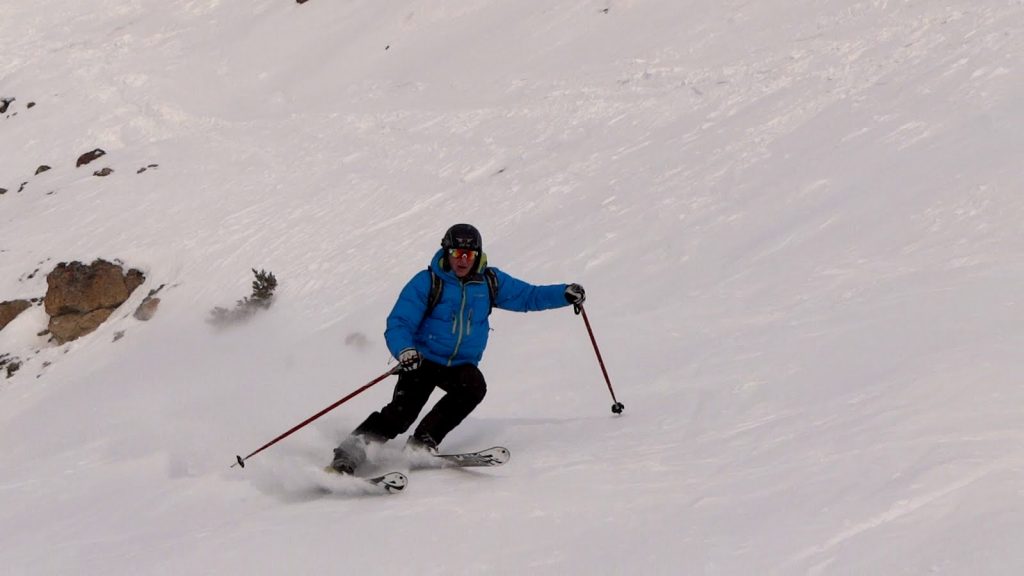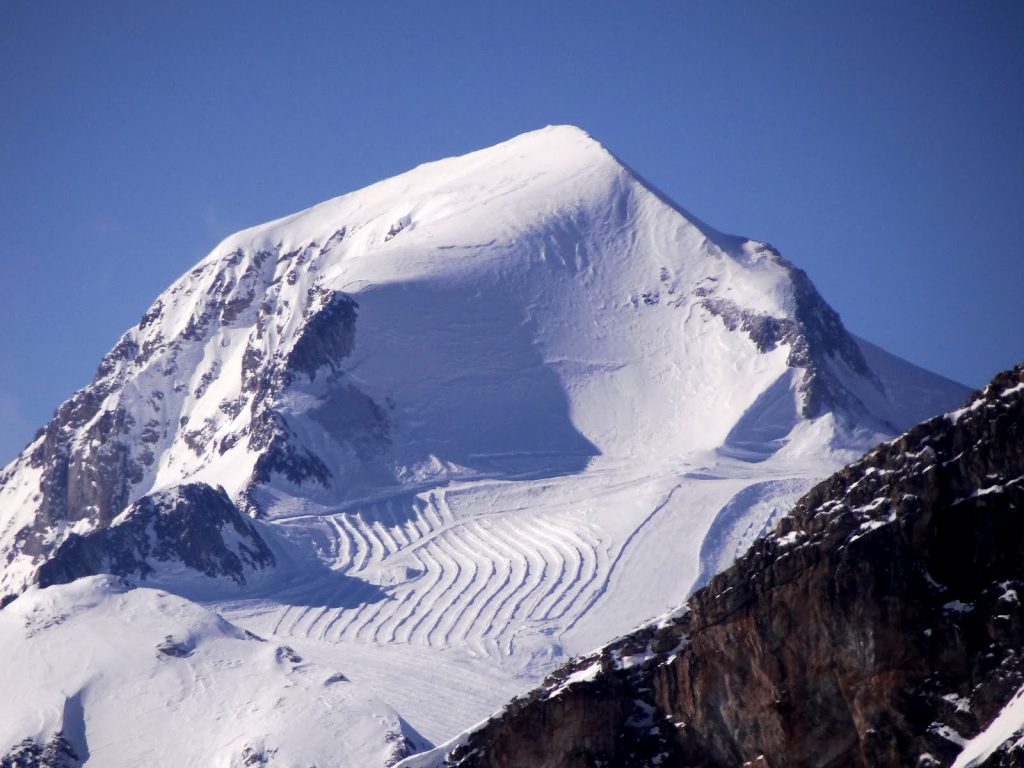K2 Kung Fujas
 Today was a day for getting used to new skis and working on technique. Fed up with trying to work with ski manufacturers and small minded shop keepers I just decided to go out a buy skis and free myself up from any commercial ties. My choice was encouraged by finding some excellent skis on sale and I ended up with the K2 Kung Fujas 179cm. This is a twin tip ski – almost as wide at the back as the front – and 102mm wide beneath the foot. It has a double rocker set up. I’d tried the wider Zag version – the H112 – and found it to be horrible – but the reviews for this K2 ski were universally excellent (Freeskier Magazine) I’d liked the off-piste performance of the H112 so figured that a narrower and lighter ski of similar design might work out well as a good all rounder – and this turned out to be correct.
Today was a day for getting used to new skis and working on technique. Fed up with trying to work with ski manufacturers and small minded shop keepers I just decided to go out a buy skis and free myself up from any commercial ties. My choice was encouraged by finding some excellent skis on sale and I ended up with the K2 Kung Fujas 179cm. This is a twin tip ski – almost as wide at the back as the front – and 102mm wide beneath the foot. It has a double rocker set up. I’d tried the wider Zag version – the H112 – and found it to be horrible – but the reviews for this K2 ski were universally excellent (Freeskier Magazine) I’d liked the off-piste performance of the H112 so figured that a narrower and lighter ski of similar design might work out well as a good all rounder – and this turned out to be correct.  The skis felt good immediately and only got better as I grew to understand them. Pivoting is incredibly effective – on piste. They are smooth in pivoting but grip well on ice at the same time. The ski is not so wide underfoot that it causes problems. Add another centimetre (H112) and the width makes piste skiing very unpleasant due to the ski levering the boot against the inside of the leg. The ski gripped well in a steep icy couloir – no trampoline-ing as happens with parabolic skis on steeps. Likewise on the steep icy and dangerous terrain the ski was light enough for swinging into jump turns without any negative issues. On steep, icy bumps the double rocker made the skis feel creamy smooth – once I remembered to do compression turns! In deep snow with a thick – non supporting crust – they gave the confidence to turn without jumping after settling into a rhythm. In carving on the piste I found that the width threw me a bit and limited my dynamic range for the moment – but on the only occasion that I pushed this issue I was pinged twice into the air on turn completion because the skis are so lively and reactive. Once I get used to the skis in a few days time I’ll be able to test this aspect out more thoroughly. The turn radius is longer than the Zag Big but I’m not sure this will remain the case once I’m more comfortable with them.
The skis felt good immediately and only got better as I grew to understand them. Pivoting is incredibly effective – on piste. They are smooth in pivoting but grip well on ice at the same time. The ski is not so wide underfoot that it causes problems. Add another centimetre (H112) and the width makes piste skiing very unpleasant due to the ski levering the boot against the inside of the leg. The ski gripped well in a steep icy couloir – no trampoline-ing as happens with parabolic skis on steeps. Likewise on the steep icy and dangerous terrain the ski was light enough for swinging into jump turns without any negative issues. On steep, icy bumps the double rocker made the skis feel creamy smooth – once I remembered to do compression turns! In deep snow with a thick – non supporting crust – they gave the confidence to turn without jumping after settling into a rhythm. In carving on the piste I found that the width threw me a bit and limited my dynamic range for the moment – but on the only occasion that I pushed this issue I was pinged twice into the air on turn completion because the skis are so lively and reactive. Once I get used to the skis in a few days time I’ll be able to test this aspect out more thoroughly. The turn radius is longer than the Zag Big but I’m not sure this will remain the case once I’m more comfortable with them.
Overall a fantastic ski and with the packaged tough Marker Griffon 13 binding amazing value on sale through Intersport at 489€ altogether. Now I’m floating around inside my ski boots with the skis being so resposive so I can see another purchase on the horizon already.
Hip Alignment
